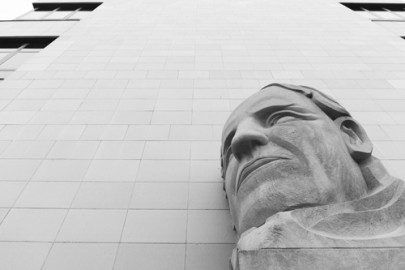Architectural details shine at Science Hall

By Alex Reyes
The Guardsman
Oh, Science Hall.
City College’s first classroom building sits atop Ocean campus’ highest plateau, an archetypal image of human aspiration, a great and worthy fortress of academic study.
Science Hall was the shared vision of City College founder Archibald Cloud, chief deputy superintendent of the San Francisco Unified School District, and renowned San Francisco architect Timothy Pflueger.
Both men were determined when ground was first broken in 1937 to build a “showplace for monumental architecture.”
Cloud and Pflueger succeeded.
Science Hall is reached from Phelan Avenue after climbing 87 stairs and crossing 11 landings. The four-story, 489-foot-long structure (one story is an underground basement), 90-feet high, commands the attention of those drawn to it.
Look west on a clear day from Science Hall’s western side and you can see the same Pacific Ocean Cloud and Pflueger first surveyed.
Science Hall’s heavy but smooth-yielding entrance doors belie their 73 years. (Science Hall opened in 1940.) The eyes catch the doors’ black, white and orange chemical hues as much as the faded original color.
Once inside the visitor sees not just more stairs, but twin murals painted in Works Progress Administration (WPA)-style.
The name of the mural is “Theory and Science,” and was painted by Frederick Olmsted.
“Theory and Science” depicts young men and women engaged in various scientific pursuits.
There are rooms and more rooms within Science Hall as well, of course.
The Biotech Office on the second floor is not just the Northern California Biotechnology Center, but the Regional Center for Bio-Link, the National Biotechnology Center.
The MESA/STEM Center is City College’s contact point for National Science Foundation science, technology, engineering and math scholarships.
The aged-brass dome at the top of Science Hall houses the astronomy department’s planetarium.
Exit Science Hall’s east side and the four large wings extending from the western side of the building adds to the impressive bulk of the building. One of the wings extends to a large bust of Leonardo da Vinci. The other wing extends to Thomas Edison.
The busts are gifts from Pflueger.
Da Vinci, Edison, Pflueger and City College champion Cox still grace the student body with their presence.
